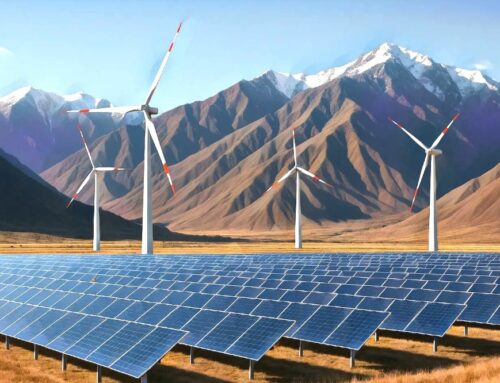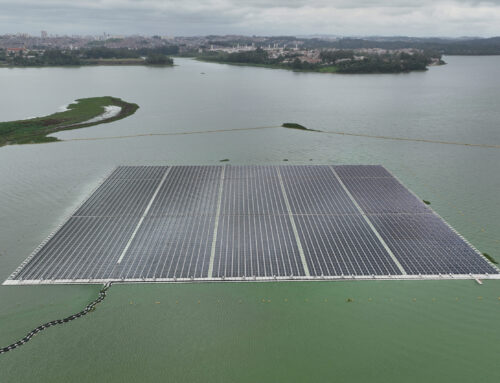When the Power Grid Needs Relief from High Demand, Here’s Who You Call
November 6, 2025
When electricity supplies are tight, being able to flip a few switches and save 38 gigawatt-hours is a pretty cool trick.
CPower Energy said this week that its customers reduced their grid electricity usage by that amount from January to September, which is enough to power about 8 million houses during a grid emergency.
The energy savings were more than double what the company’s customers recorded in all of 2024.
CPower is a leading vendor of demand response services, which means that it organizes large groups of clients who agree to reduce their energy use during periods of high demand. This is a resource whose value is increasing as utilities struggle to build power plants fast enough to keep up with the rising need for electricity for data centers and other large users.
Get Inside Clean Energy
Today’s Climate
Tuesdays
A once-a-week digest of the most pressing climate-related news, written by Kiley Price and released every Tuesday.
Get Today’s Climate
Breaking News
Don’t miss a beat. Get a daily email of our original, groundbreaking stories written by our national network of award-winning reporters.
Get Breaking News
ICN Sunday Morning
Go behind the scenes with executive editor Vernon Loeb and ICN reporters as they discuss one of the week’s top stories.
Get ICN Sunday Morning
Justice & Health
A digest of stories on the inequalities that worsen the impacts of climate change on vulnerable communities.
Get Justice & Health
I spoke with Mike Smith, CPower’s CEO, this week to understand how demand response works. His Baltimore-based company has about 200 employees.
“We’re a shock absorber,” he said. “We are there to turn down our collective usage, and that is the usage of our customers in response to the grid’s need.”
CPower’s clients operate businesses in 23,000 locations across the country, and they have the potential to reduce their electricity use by up to 6.7 gigawatts. The bulk of that capacity comes from large manufacturers that are flexible in how much power they need from the grid.
In exchange for cutting their energy use, the customers receive compensation from the grid operator, with $1.2 billion paid since 2015.


Metal Technologies is an energy intensive business. It works with CPower of Maryland to reduce its power use at times of high demand. Credit: Metal Technologies
While 38 gigawatt-hours is a large number, most of that energy savings happened during a few hours on a few days. About half of the total happened during brief periods of the June heat wave, which led to tight electricity supplies in the PJM Interconnection and ISO New England grid regions, Smith said.
I asked Smith how his customers get the message to turn down their power, imagining that he has a central controller and pushes a few buttons. He explained that the process varies depending on the client, with some agreeing to have their power demand reduced remotely by CPower, and others wanting to receive a phone call, text message or email so they can make the adjustment themselves.
Turning down the power may conjure images of dimming lights and idled assembly lines, but it often doesn’t work that way. Instead, many customers switch from grid power to local backup sources, such as batteries.
Nick Heiny, vice president and general counsel for Metal Technologies of Indiana, is a CPower customer. I asked him how he would explain demand response to somebody unfamiliar with it.
Demand response “is similar to deciding to wait a few hours to leave for a road trip the day before Thanksgiving after a foot of fresh snow has fallen and all highways are jammed,” he said in an email.
It’s also a way to be a good neighbor, he said. His plants are large power users, so when they reduce their use, it frees up capacity for others on the grid and helps to reduce the risks of brownouts. His company operates metal casting plants in Indiana, Michigan and Mexico.
This story is funded by readers like you.
Our nonprofit newsroom provides award-winning climate coverage free of charge and advertising. We rely on donations from readers like you to keep going. Please donate now to support our work.
Industry analysts often categorize demand response as a form of a virtual power plant, a term that describes when many customer-owned power sources work together to mimic the effect of large power plants.
The U.S. market for virtual power plants, including demand response, is 37.5 gigawatts, an increase of 14 percent from last year, according to the research firm Wood Mackenzie.
Demand response “is receiving unprecedented attention” because of the urgency that utilities and grid operators are feeling to have enough power to serve data centers, said Ben Hertz-Shargel, global head of grid edge for Wood Mackenzie.
He said the challenges to growth in demand response are almost all regulatory, including utilities that have caps on participation and grid operators that have not yet found ways to fully integrate these systems. The Federal Energy Regulatory Commission sought to accelerate the use of demand response and other customer-owned resources with a 2020 order, but implementation has been slow.
CPower was founded in 2014 under the ownership of H.I.G. Capital, a private equity firm.

In 2018, H.I.G. sold CPower to LS Power of New York, an independent power company. Then, in May, NRG Energy said it had reached an agreement to buy assets from LS Power, including 18 power plants and CPower. The deal is contingent on regulatory approval, which is still pending.
CPower’s competitors include companies that either specialize in demand response or offer it as part of a larger selection of goods and services. This includes Enel X and Siemens, among others.
One upshot of the NRG acquisition is that CPower may now have greater access to sell its services to companies that already buy power from NRG, said Hertz-Shargel.
But CPower’s market is poised for growth regardless of who owns it, thanks to the need to accommodate the substantial power needs of data centers.
Smith, the company’s CEO, said data centers have become a larger share of his customer base. This ties into a recurring theme this year as researchers and grid operators recognize that data centers need to be adaptable in their power use, or else there won’t be enough electricity to go around.
“Everybody in the data center space, no matter what the use case, is looking at becoming more and more flexible, and we’re running right along beside them,” Smith said.
Other stories about the energy transition to take note of this week:
Democrats Sweep Election Day: Voters chose Democrats in all major contested races on Tuesday, a result that the party is interpreting as a rebuke of the Trump administration and an encouraging sign for next year’s midterm elections. A key issue was energy prices and utility bills, as Marianne Lavelle reports for ICN. Democrats did especially well in Virginia, winning the governor’s race and gaining seats in the House of Delegates, as Charles Paullin reports for ICN.
Democrats Take Two Seats on Georgia Utility Regulatory Board: On a good night for Democrats nationwide, the party gained two seats on the Georgia Public Service Commission, ousting Republican incumbents amid public dissatisfaction with high utility rates, as David W. Chen reports for The New York Times. Republicans will still hold a 3-2 majority on the panel, but the results indicate the public was receptive to Democrats’ campaign messages about reducing utility rates and a willingness to invest more in renewable energy.
Illinois Passes a Major Energy Bill: Illinois legislators passed a bill that increases incentives for battery energy storage, geothermal power and virtual power plants, as Kari Lydersen reports for Canary Media. Gov. JB Pritzker has said he will sign the measure, which is one of the most significant state-level clean energy bills to pass this year. The Clean and Reliable Grid Affordability Act says the state will procure 3 gigawatts of energy storage by 2030, among other provisions.
Can Cows and Solar Coexist? I went to Kentucky to visit a farm where sheep graze alongside a utility-scale solar array, and I found that the future of this so-called solar grazing is in cattle. My story for ICN provides a first look at CattleTracker, a system from the solar developer Silicon Ranch that is customized to operate in environments with large, often clumsy animals in the vicinity. If solar developers can convince cattle ranchers to install solar, there is an opportunity to deploy this energy hardware on some of the vast amounts of land used for cattle grazing.
Inside Clean Energy is ICN’s weekly bulletin of news and analysis about the energy transition. Send news tips and questions to [email protected].
About This Story
Perhaps you noticed: This story, like all the news we publish, is free to read. That’s because Inside Climate News is a 501c3 nonprofit organization. We do not charge a subscription fee, lock our news behind a paywall, or clutter our website with ads. We make our news on climate and the environment freely available to you and anyone who wants it.
That’s not all. We also share our news for free with scores of other media organizations around the country. Many of them can’t afford to do environmental journalism of their own. We’ve built bureaus from coast to coast to report local stories, collaborate with local newsrooms and co-publish articles so that this vital work is shared as widely as possible.
Two of us launched ICN in 2007. Six years later we earned a Pulitzer Prize for National Reporting, and now we run the oldest and largest dedicated climate newsroom in the nation. We tell the story in all its complexity. We hold polluters accountable. We expose environmental injustice. We debunk misinformation. We scrutinize solutions and inspire action.
Donations from readers like you fund every aspect of what we do. If you don’t already, will you support our ongoing work, our reporting on the biggest crisis facing our planet, and help us reach even more readers in more places?
Please take a moment to make a tax-deductible donation. Every one of them makes a difference.
Thank you,
Search
RECENT PRESS RELEASES
Related Post





